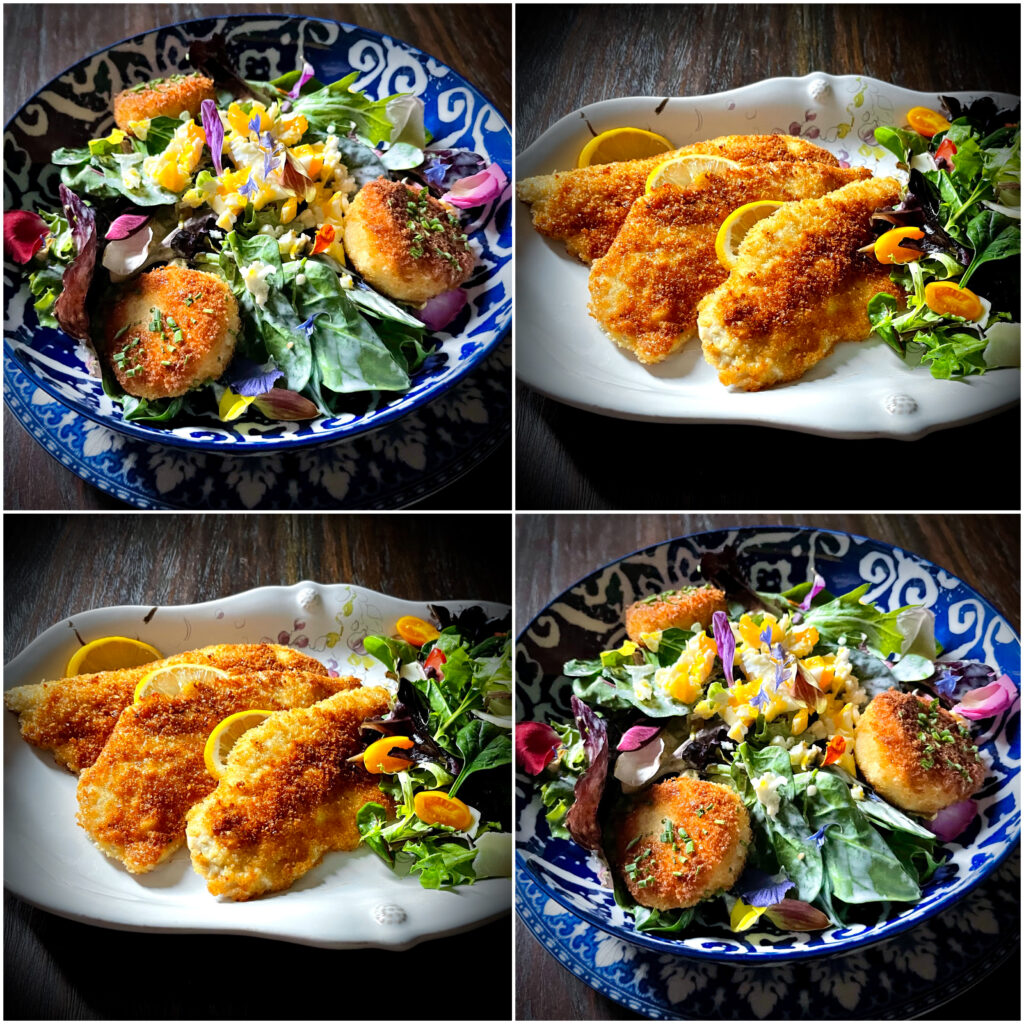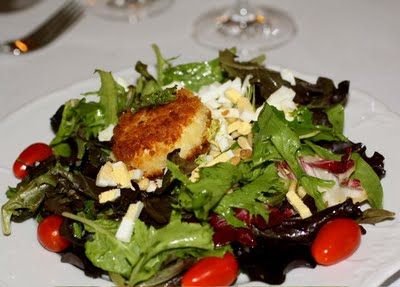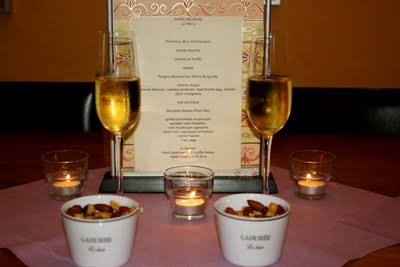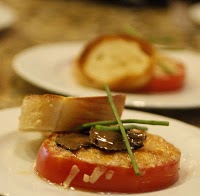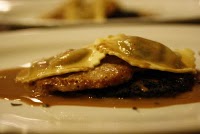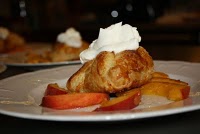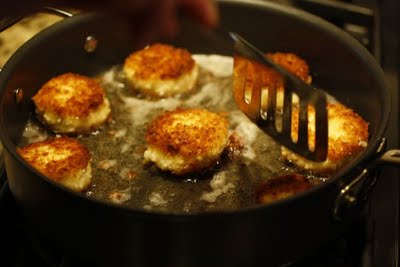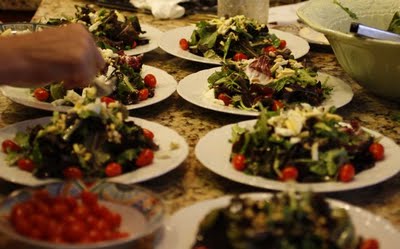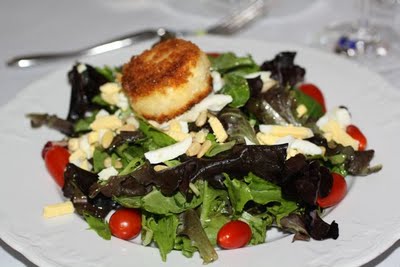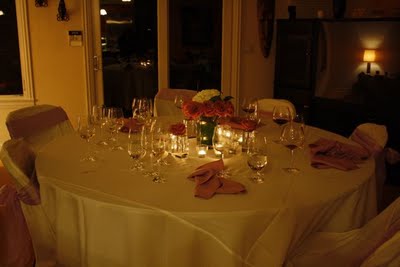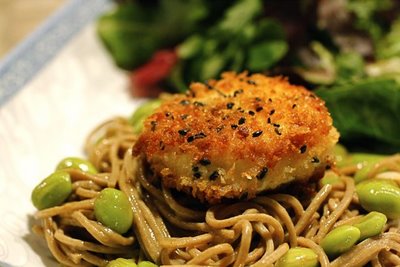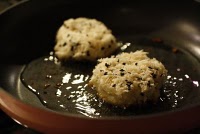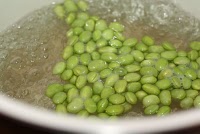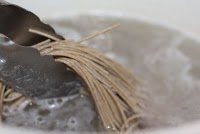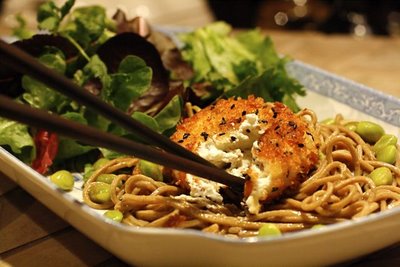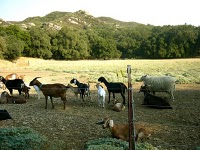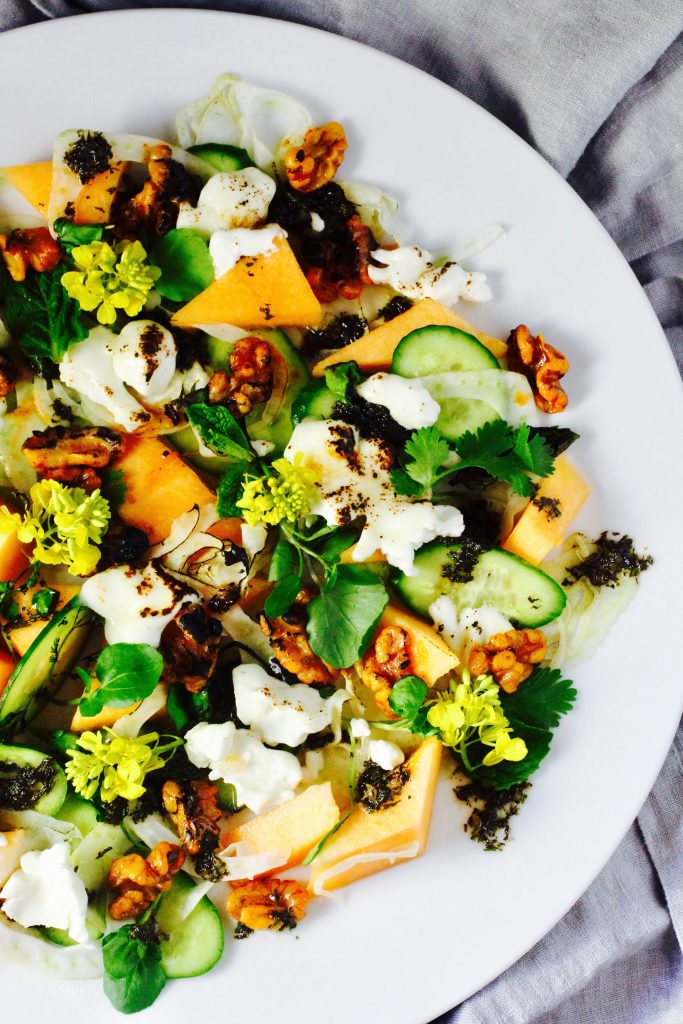
Charred Goat Cheese Salad
Fennel, Cantaloupe, Cucumber
Smoky Chile Walnuts, Charred Parsley Vinaigrette
Mustard Flowers, Watercress, Mint, Cilantro
I adopted a goat. I named her Miss Chèvre Chaud. She’s a gentle soul who devours mustard plant with wild abandon and is deliriously happy to munch on wild fennel.
For the past several years, hundreds of goats like her have been employed to graze on non-native weeds as part of the Palos Verdes Peninsula Land Conservancy restoration project.
The Palos Verdes Peninsula Land Conservancy’s Adopt-A-Goat program supports their effort to turn the weedy hillsides into native coastal sage scrub and grassland habitats – supporting threatened and endangered plants and wildlife, such as the California gnatcatcher and cactus wren.
Goats are an ecologically sound, cost-effective, and efficient means of habitat restoration. As a bonus, their droppings provide a natural top-soil fertilizer. The goats make very little noise, leave no trash, and are a charming addition to the community for the time they spend with us.
Invasive Plants: Mustard and Fennel
Invasive non-native plants while pretty to look at, and pretty tasty to eat…cause damage to the ecosystem by crowding out and reducing native plant species ultimately reducing shelter and food for native animal species.
These non-native plants tend to have shallow root systems which do little to help with soil stabilization on the hilly slopes. And both mustard and fennel grow quite tall, unfortunately blocking out necessary sunlight for native species.
Native of Europe, black mustard Brassica nigra, is an annual plant that covers the Peninsula after the winter rains. It sprouts easy and densely, so as to crowd out the native plants that are home to native birds. It is short-lived, so when the plant dies the dried stalks remain standing and present a significant fire hazard.
Native of Southern Europe, fennel Foeniculum vulgare is another invasive species that grows in dense thickets and crowds out native species. When the fennel plants die in late summer, the dried stems remain standing and can be fuel for wildfires.
Savory Fruit Salad with Goat Cheese
This delicious savory fruit salad was created to showcase Miss Chèvre Chaud’s affection for reducing our local mustard and fennel (aka goat-candy) population while promoting fresh cheese made from goat’s milk.
To highlight the good work Miss CC and her team do to clear the hillsides and reduce wildfire danger…the salad has three charred elements; charred parsley vinaigrette, charred/caramelized goat cheese, and smoky walnuts. Simultaneously the mustard flowers do indeed taste like yellow mustard and add a punchy savory note to the salad.
Continue reading “Adopt-A-Goat and Charred Goat Cheese Salad”
